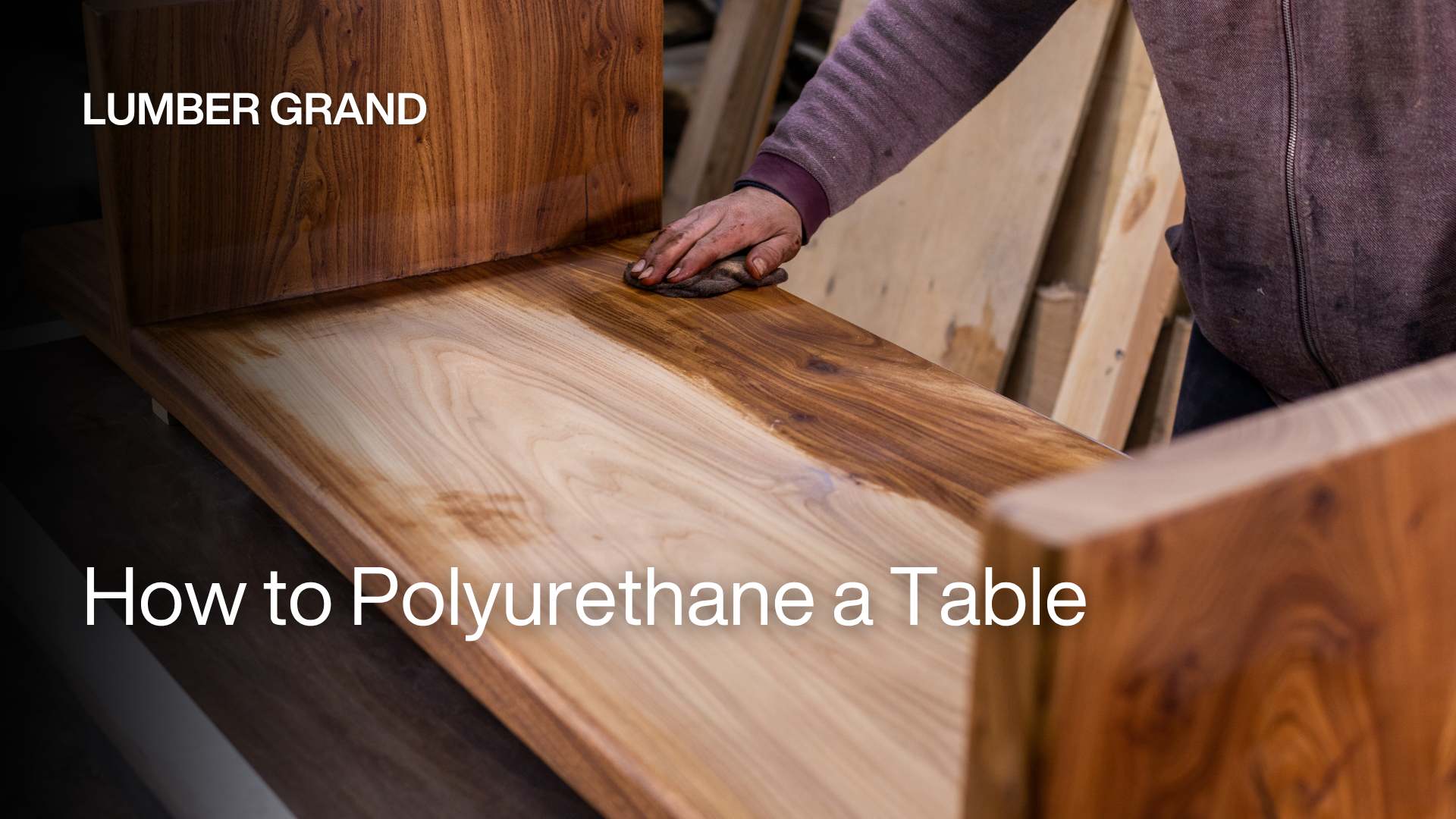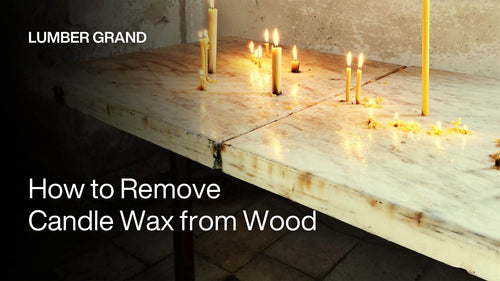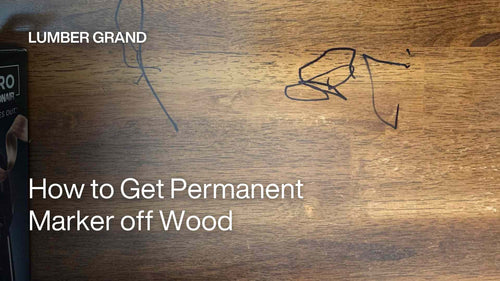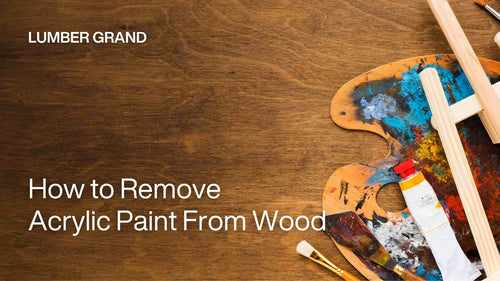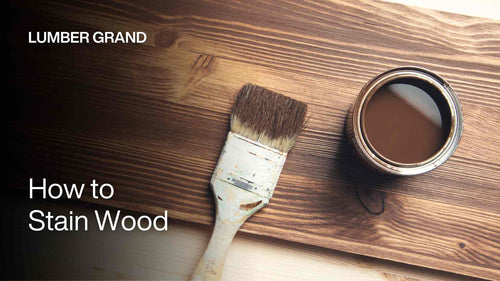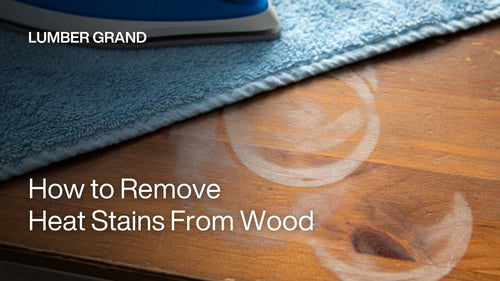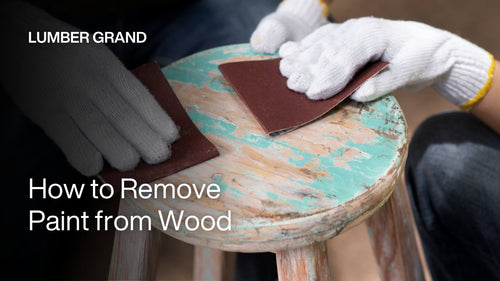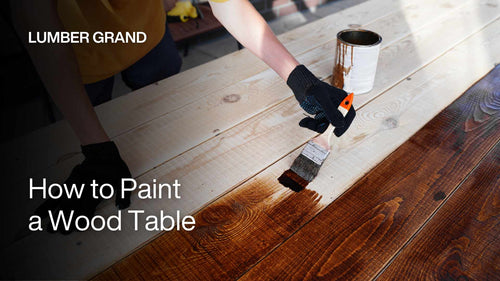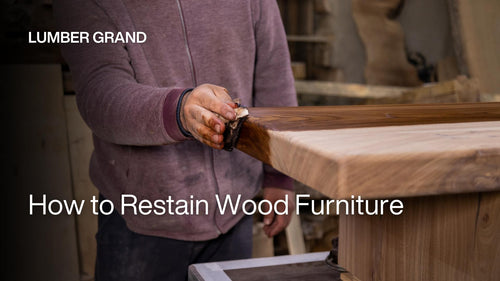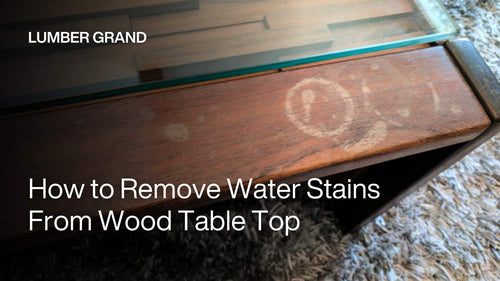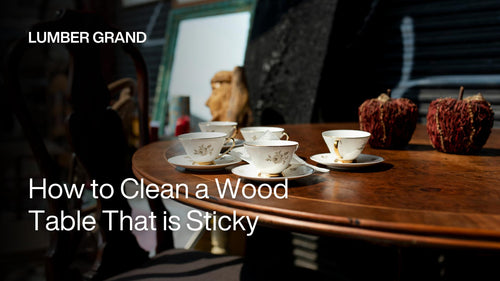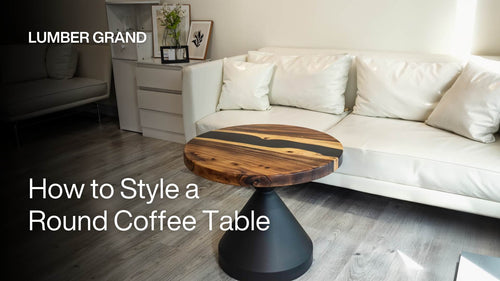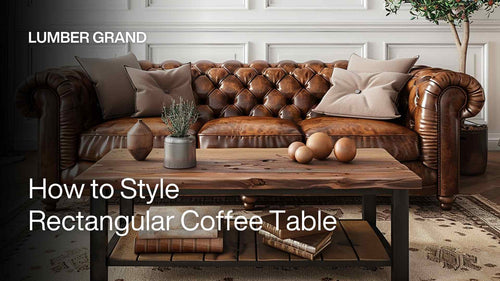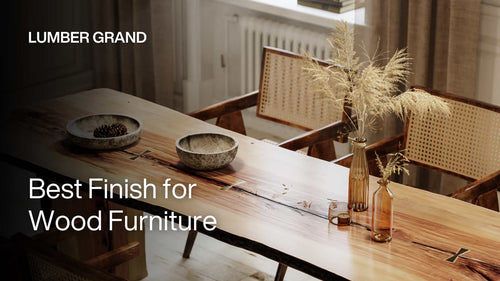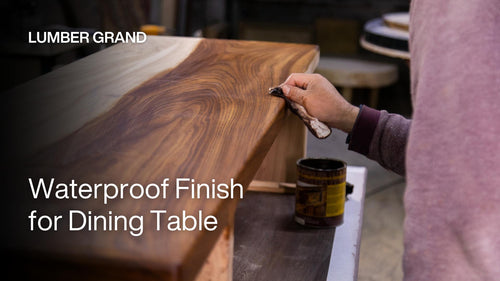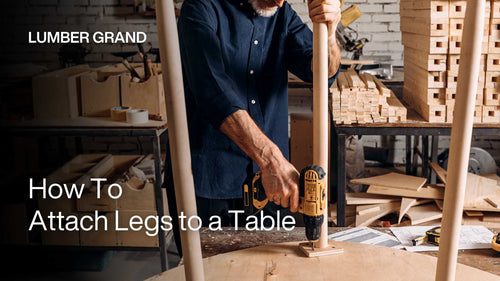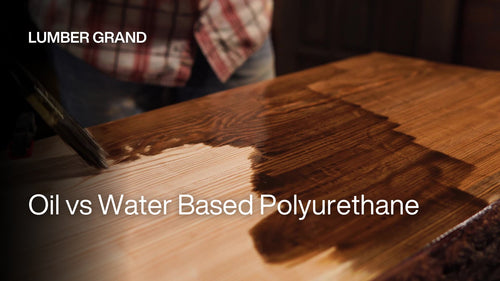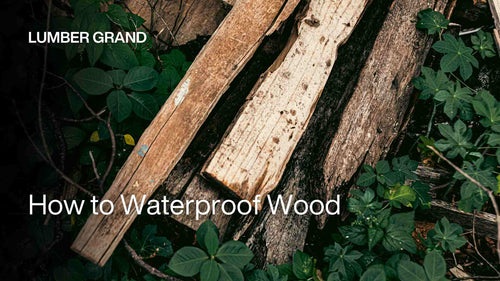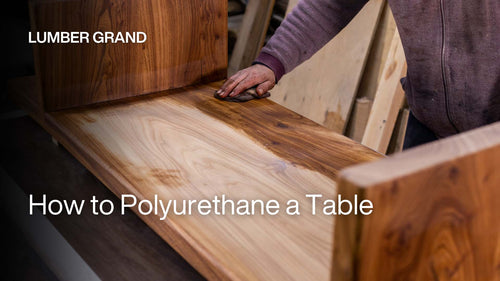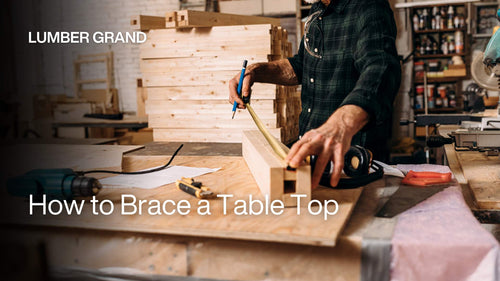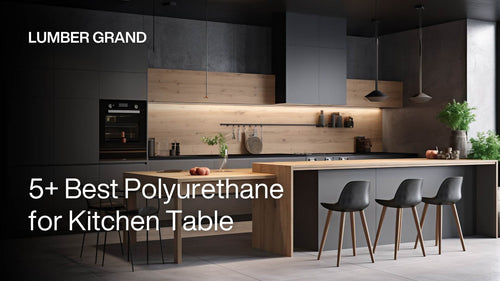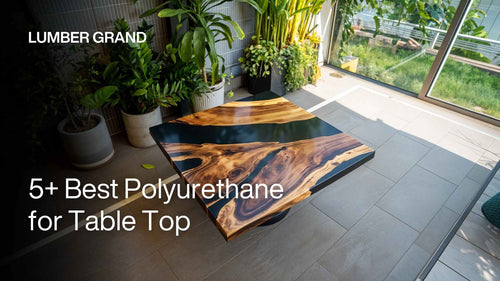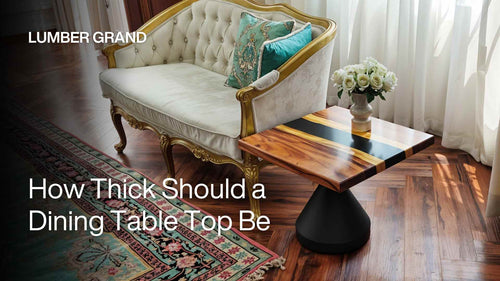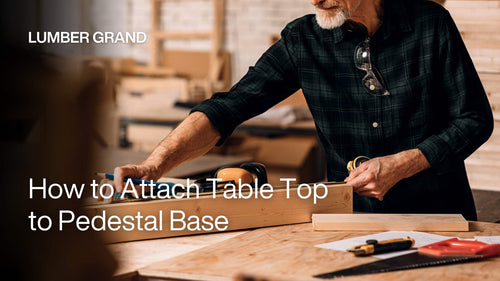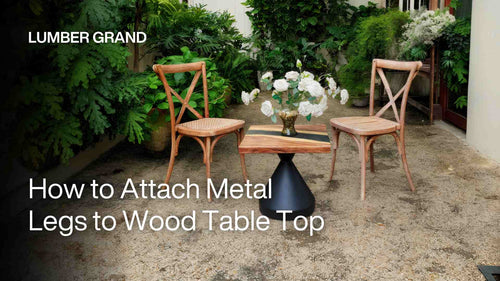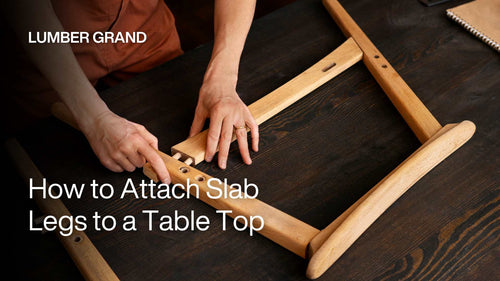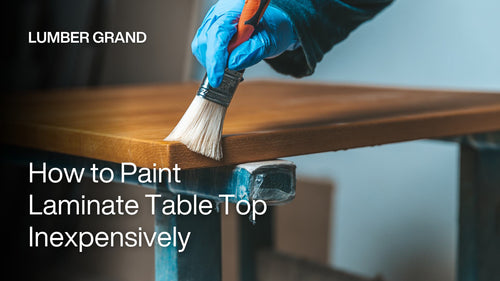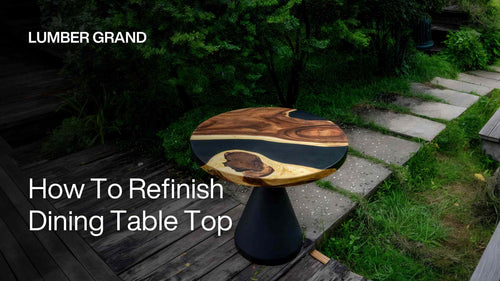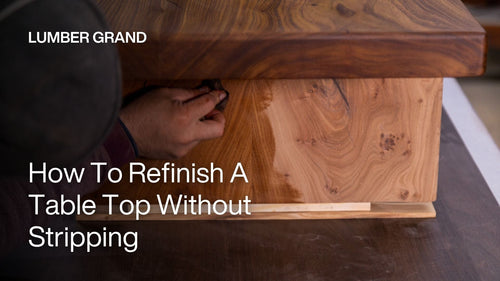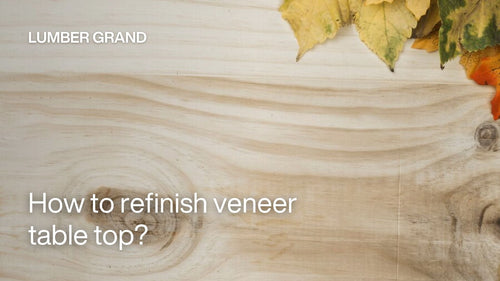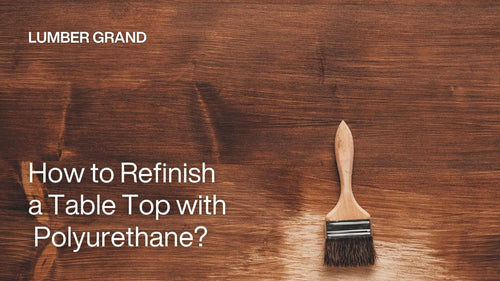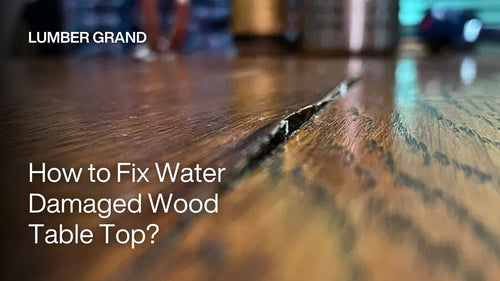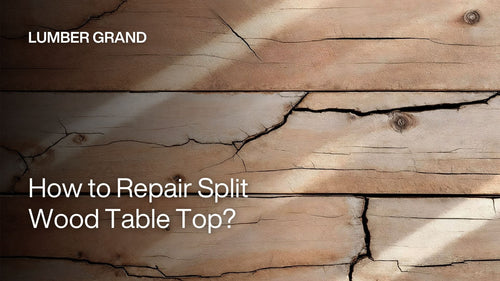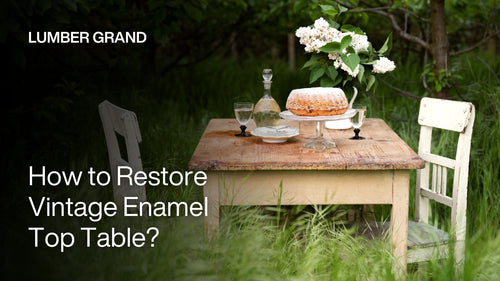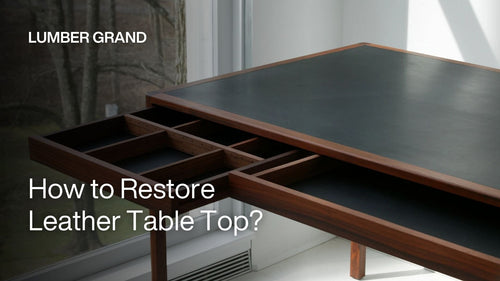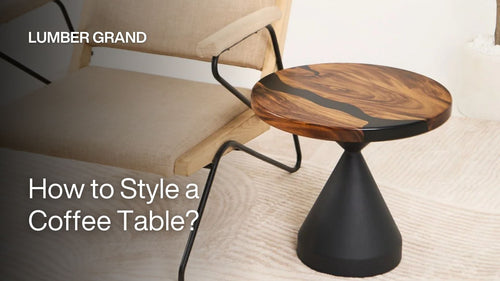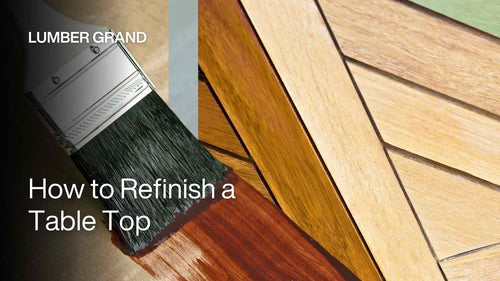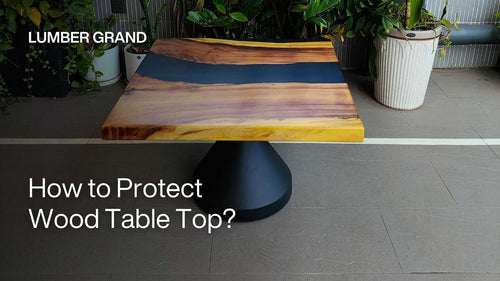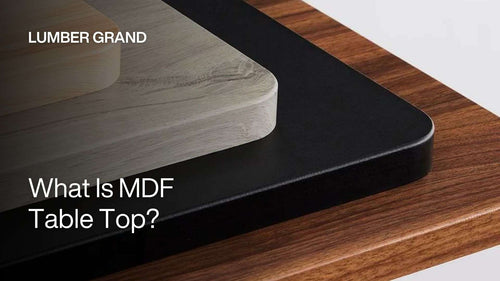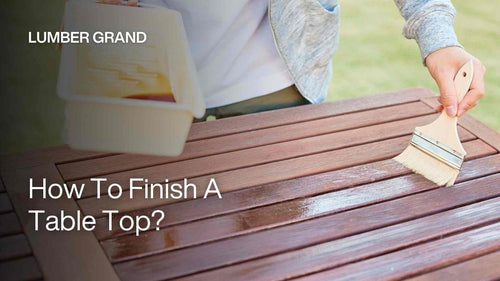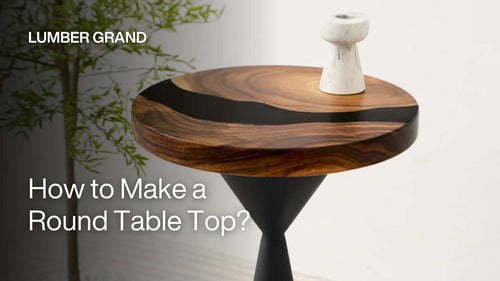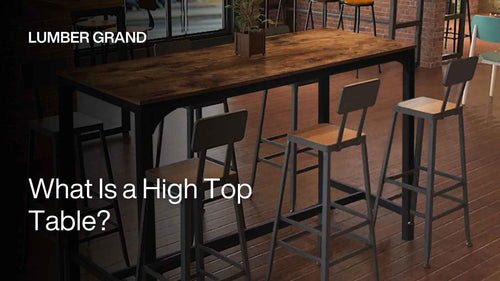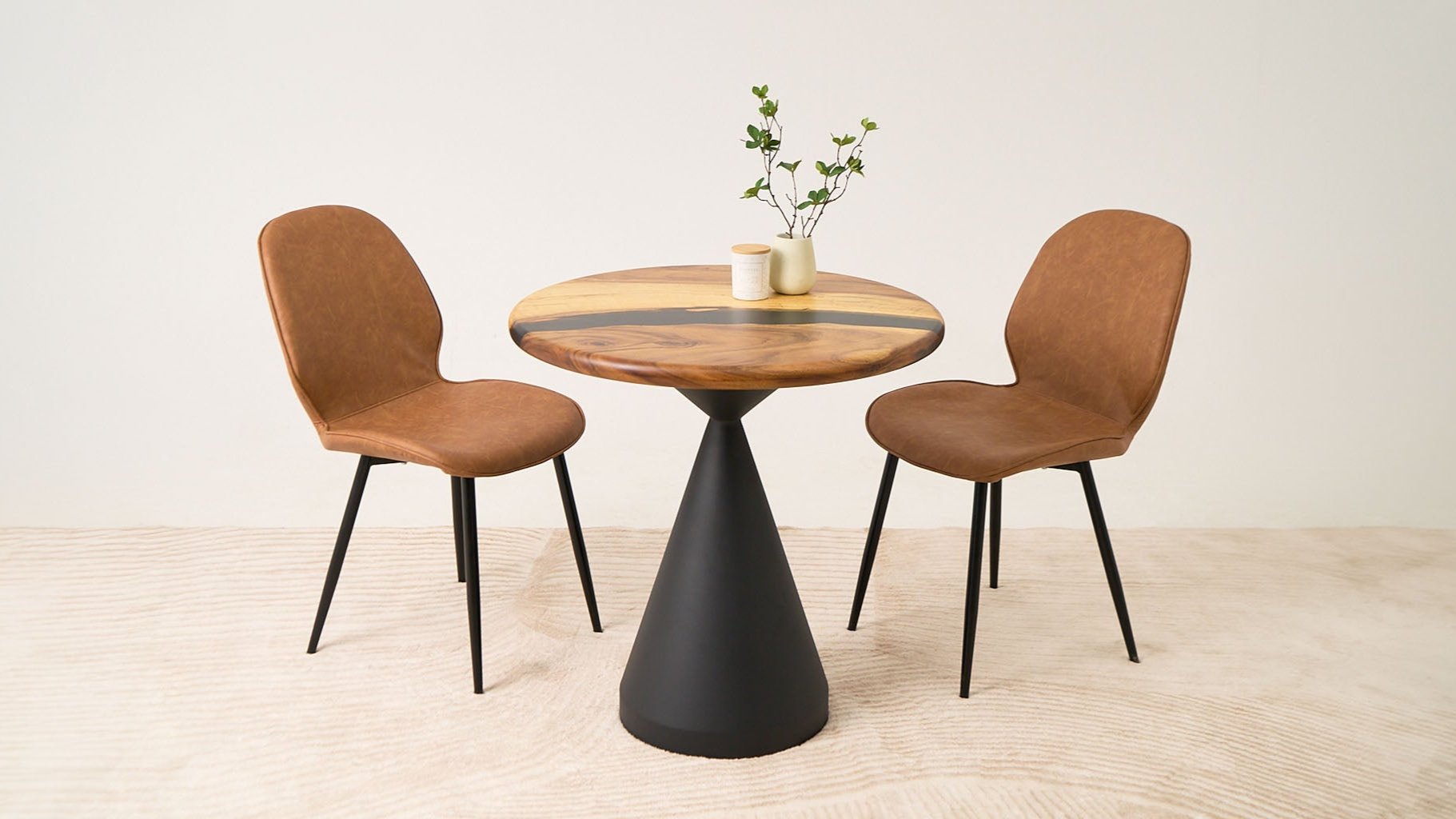Learning how to polyurethane a table DIY will save you a fortune compared to hiring someone else to do it. For us, the best way to polyurethane a table is to prepare the surface, apply thin polyurethane coats, sand between coats, and allow ample drying time.
It sounds like a lot, but each step in Lumber Grand’s guide is simple when you take it one at a time. No matter if you choose water-based or oil-based polyurethane wood finish (we'll help you pick the right one), your table will come out flat, smooth, and last for years.
Ready to apply polyurethane to a table? Read more!
What is Polyurethane Finish and Why Use it on Tables?
Polyurethane is a protective coat you put on wood to keep it looking good and lasting longer. This finish offers a clear, tough layer that goes over your wooden floors, furniture, or cabinets.
Polyurethane coating does two main jobs.
-
First, it protects your wood from everyday wear and tear like scratches from chair legs, water spills, and scuff marks from walking around.
-
Second, it makes the wood look better by giving it a nice, smooth shine.

Polyurethane is a popular choice for finishing tables because it resists scratches, spills, etc.
Photo: Freepik
Most homeowners love polyurethane finish because once you apply it, your table tops stay protected for years. It's particularly popular for hardwood floors since they get walked on every day, and for kitchen cabinets that deal with constant opening, closing, and occasional spills.
You might be interested in: Best Polyurethane for Kitchen Table
5 Popular Benefits of Polyurethane Table Top:
-
Superior scratch and water resistance
-
Easy to apply for beginners
-
Available in different sheens (flat, satin, semi-gloss, gloss)
-
Long-lasting protection
-
Enhances wood's natural color and grain
How to Polyurethane a Table Step-by-Step Guide
Now that you understand the basics of polyurethane, it's time to get your hands dirty. This step-by-step process will walk you through everything from setting up your workspace to applying that final coat.
Step 1: Prepare Workspace, Materials, and Tools Needed for Polyurethaning a Table
Before you start learning how to apply polyurethane to a table, you’ll need to gather these materials:
Sanding supplies:
-
120, 180, 220, 320-grit sandpaper: $8 — $15
-
Sanding block or orbital sander: $7 — $80
-
Tack cloth for dust removal: $2 — $5
Application tools:
-
High-quality natural bristle brush: $7 — $15
-
Foam brush (reduces brush marks): $2 — $5
-
Microfiber mini roller for large surfaces: $8 — $15
Materials needed:
-
Polyurethane finish (oil-based recommended): $14 — $25/quart
-
Mineral spirits: $8 — $12/quart
-
Wood conditioner (for soft woods): $6 — $18/quart
-
Clean rags: $5 — $7
After the shopping list, getting your workspace ready is half the battle when you're learning how to apply polyurethane to a table top. You should find a spot with good airflow but away from where people walk around.

Getting your materials and workspace ready is halfway to learning how to polyurethane a table
Photo: Freepik
Besides, those tiny specks floating in the air will land on your wet polyurethane and create bumps and rough spots that you'll see and feel later. So before you even open that can, spend time wiping down everything such as your table, the floor around it, even the walls nearby.
Step 2: Clean and Remove Old Finish of Table
Secondly, we clean the table thoroughly with mild soap and water and let it dry completely. After that, you’ll need to remove the old finish using sandpaper.

You’ll need to remove the old finish using sandpaper or orbital sander
Photo: Freepik
How to sand the table before applying polyurethane:
-
Start with 120-grit sandpaper to remove the old finish
-
Move up to 180-grit to smooth things out
-
Finish with 220-grit for that final silky prep
Our advice: Always sand with the grain direction to avoid creating cross-grain scratches that will show through your new finish. And don’t forget to remove all dust with tack cloth before proceeding to step 3.
Step 3: Apply Wood Conditioner (If Needed)
Suppose you're wondering how to polyurethane a table with soft woods like pine, maple, or cherry. In that case, we recommend putting on pre-stain conditioner first to stop your finish from looking spotty and uneven. These softer woods soak up polyurethane differently in different spots, which gives you a blotchy, patchy look that's pretty ugly.
 Wood conditioner or pre-stain conditioner acts like primer before you paint a wall
Wood conditioner or pre-stain conditioner acts like primer before you paint a wall
Photo: Freepik
As you might not know, pre-stain conditioner acts like primer before you paint a wall. It helps everything go on smoothly, and even so, your polyurethane absorbs the same way across the whole table surface.
Step 4: First Polyurethane Coat Application on Table
Get your polyurethane ready before you start brushing. What you need to do depends on which type you bought:
-
If you have oil-based polyurethane, we mix oil-based poly with 10% mineral spirits to thin it out
-
Stir it slowly and gently, the way you'd stir soup without splashing. Don't shake the can because that puts tiny bubbles in it, and those bubbles will mess up your smooth finish.
-
If you bought water-based polyurethane, you can use it immediately.
How to polyurethane a table with ease:
-
Brush on thin, smooth coats going with the wood grain
-
Keep a wet working edge so you don't get overlap marks
-
Move at a steady pace, but don't go over the same spot too many times — that actually pulls off the polyurethane you just put on.
-
Set up a bright light so you can see what you're doing. You want to catch drips or thin spots while you can still fix them.
Important note: Your first polyurethane coat is just the base layer on the table. Hence, it's totally normal if it doesn't look perfect right away.
Read more: How to Refinish a Table Top with Polyurethane
Step 5: Sanding Polyurethane Between Coats
Sanding between coats is what separates a good finish from a great one. First, you need to wait for the right amount of time. And how long between coats of polyurethane depends on your chosen formulation:
-
Oil-based polyurethane needs a full 24 hours to get ready for sanding.
-
On the other hand, water-based dries much faster, so you only need to wait 4 to 6 hours.

Sanding between coats is what separates a good finish from a great one
Photo: Freepik
Once it's ready, here's what you do:
-
Use 320-grit sandpaper — this is much finer than what you used to prep the table, almost like a gentle polish.
-
You sand lightly with the wood grain direction, as simply as you did in the last steps.
-
Finally, we wipe away every speck of dust with your tack cloth when you're done.
The sanding step only takes a few minutes, but it ensures that each coat bonds to the one underneath it. So please don’t skip any step of how to polyurethane a table, or you might have to start over when you finish, or you may fail months later.
Step 6: Apply 3 — 4 Additional Polyurethane Coats on Table
So, how many coats of water based polyurethane on table? You'll need 4 to 6 coats to get good protection. Water-based polyurethane goes on thinner than oil-based, so it takes more layers to build up that tough protective shell your table needs.
For oil-based polyurethane, you need fewer coats because each one goes on thicker:
-
Put on at least 3 coats for any table top. This number is your minimum for decent protection.
-
If your table gets heavy use (like a kitchen table where kids do homework and you serve dinner every night), go with 4 or 5 coats for extra durability.
-
How long between coats of polyurethane? As mentioned above, we again give oil-based polyurethane a full 24 hours between coats.
 Brush on thin, smooth polyurethane coats going with the wood grain
Brush on thin, smooth polyurethane coats going with the wood grain
Photo: Freepik
Keep doing the same thing every time you apply a coat. Don't get lazy on coat number three just because you're tired of the process.
Jimmy’s expert at Lumber Grand stated:
Use the same brush technique, keep those coats thin and even, and sand lightly between each one.
The good news is that once you get all your coats on and everything's cured, you'll have a table that can handle whatever your family throws at it for years to come.
Not interested in sanding? Read more: How To Refinish A Table Top Without Stripping and Sanding
Water-Based vs Oil-Based Polyurethane: Which One is Better for Table?
You can choose between the 2 best polyurethane types for table top: Oil-based and water-based polyurethane. Each of them provides you with distinct advantages. Yet, it’s mostly depending on your specific needs and preferences.
So, when you learn how to polyurethane a table step by step, understanding each term is a nice-to-have.
1. Oil-Based Polyurethane
The oil-based version has a nice trick. It smooths itself out as it dries on flat surfaces like tabletops or floors. You don't have to be perfect with your brush strokes because it naturally evens out any marks or bumps.
-
Best for: Kitchen tables, epoxy dining tables, high-use surfaces
-
Ideal temperature range for applying oil-based polyurethane: Between 65 — 75°F (18 — 24°C)
-
Ideal humidity: Around 50%
|
Pros |
Cons |
|
|
2. Water-Based Polyurethane
It mixes the protective ingredients with water instead of harsh chemicals. However, you'll need to apply more coats to get the same tough protection.
They're well-known for drying much faster than oil-based and don't have a strong smell, which many people prefer, especially when working indoors.
-
Best for: Light-colored woods, low-traffic pieces
-
Ideal temperature range for applying water-based polyurethane: between 60 — 80°F (16 — 27°C)
-
Ideal humidity: below 60 — 70%
|
Pros |
Cons |
|
|
Our expert’s advice: Oil-based polyurethane is generally the best polyurethane for table top applications due to superior durability and heat resistance.
Mistakes People Often Make When Polyurethaning a Table
Even experienced woodworkers run into these issues, so don't worry if your first attempt isn't perfect. Here's how to spot problems and fix them for a smooth how to polyurethane a table process:
- Bubbles in the finish: Those annoying little bubbles that make your table look like it has chicken pox usually happen for a few reasons. Maybe you shook the polyurethane can like a paint mixer, put the coat on too thick, or worked when it was too hot in your workspace.
- Brush marks: If your finish looks like a plowed field with all those brush lines showing, you're probably using a not good brush, going against the wood grain, or the polyurethane is drying too fast for you to smooth it out.
- Dust nibs: These are tiny bumps that feel like sandpaper when you run your hand over the finish. They happen when dust settles on your wet polyurethane.
- Scratches showing through: If you can see scratches from your earlier sanding coming through the finish, this means you didn't sand well enough between coats.
How to Apply Polyurethane Without Brush Marks
Brush marks are common when you're figuring out how to apply polyurethane properly. Here's how to avoid them:
-
Get good brushes: Natural bristles work best with oil-based poly
-
Thin your first coat: You can achieve this by adding some mineral spirits (in Step 4)
-
Use long, steady strokes: They should go with the wood grain
-
Don't keep brushing over it: Don’t forget to let the poly settle on its own
-
Try foam brushes: They’re a polyurethane lifesaver for new beginners if you want an even smoother finish.
Expert tip: Oil-based polyurethane levels itself out on table surfaces when you apply it thin and just let it do its thing naturally.
How to Clean a Polyurethane Table Properly
After discovering how to polyurethane a table, it doesn’t mean you can end your journey. You also need to know how to take care of your polyurethane-finished table. No worries, this process is very easy once you read our words.
Daily maintenance is no longer a nice-to-have thing, but it’s a must for any folks owning a wood table.
-
Use coasters under drinks and placemats under plates
-
Clean up spills right away, especially anything sticky or acidic like juice or wine
-
Dust regularly with a microfiber cloth, which grabs dust instead of just pushing it around
-
Stay away from harsh cleaners like bleach or anything with ammonia, or they will damage your polyurethane finish
Or you can choose the deep cleaning method when your table needs more than just dusting:
-
Mix a tiny bit of mild dish soap with warm water
-
Use a damp cloth, not soaking wet, and wipe gently across the surface
-
Dry it off right away with a clean towel to prevent water spots from forming
-
Every 6 to 12 months, you should apply a thin layer of paste wax to keep the finish looking rich and protected
FAQs
1. Is 4 Coats of Polyurethane Too Much?
No, 4 coats of polyurethane is not too much for a table top. Actually, it's the common recommendation for those surfaces that are high-use. Most professionals suggest 3 coats at least for proper protection. Still, 4 to 5 coats will give the most protection to dinner tables and kitchen tops that are subjected to heavy and daily use.
2. Is it Better to Brush or Roll Polyurethane?
For table tops, rolling polyurethane often produces superior results compared to brushing. Microfiber mini rollers are particularly effective because they're quicker to apply and almost foolproof.
3. What is the Best Applicator for Polyurethane on a Table?
The best applicator for polyurethane on a table relies on your experience level and surface type:
-
For beginners: Foam brushes are a good choice because they reduce brush marks and are easy to control. They work particularly well on flat table surfaces.
-
For experienced users: Use good-quality natural bristle brushes (oil-based) or microfiber mini rollers to get the best finishes on large flat surfaces.
-
Permit no room for error: Wipe-on polyurethane application with lint-free cloths is the easiest application method to prevent brush marks.
4. How Many Coats of Polyurethane Should You Put on a Table Top?
Table tops need at least 3 coats, while the exact number varies according to the polyurethane used and intention behind its application.
-
Oil-based polyurethane: 3 to 4 for standard protection, and 4 to 5 for very heavy use, for example, kitchen and dining tables.
-
Water-based polyurethane: 4 to 6 minimum, since more coats are usually required as opposed to oil-based for the same protection.
-
High-use tables: 4 to 6 coatings give best durability for tables used every day for hot dishes and washing.
How to Polyurethane a Table: Guide Ends Here
Congratulations! You've just learned everything you need to know about how to polyurethane a table on wood. Keep these key things in mind as you work on your next project:
-
Getting your table properly cleaned and sanded is half the battle
-
Several thin coats always look better than trying to get it done fast with thick, gloopy coats
-
That light sanding between coats is what makes each layer stick properly
-
For tables that get daily use, oil-based polyurethane gives you the toughest protection, even though it takes longer to dry
Want to tackle more woodworking projects? Check out our other step-by-step guides on furniture blogs and bringing old pieces back to life.
Still have questions about your specific table? We're here to help. Whether you're stuck on how to polyurethane a table with tricky curves, dealing with an old finish that won't come off, or anything else, reach out to us. We love helping people get professional results on their DIY projects.

